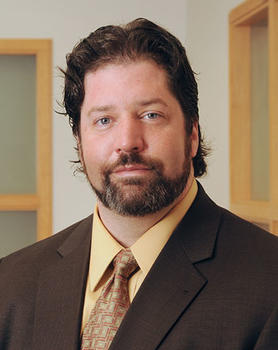In This Story
We have more in common than not. It’s a sentiment that comes from a good place. In a diverse world where the cacophony of opposing opinions seems to get louder every day, we need to recognize the traits common to our shared humanness. We all need food and shelter, clean air and water, we all wish to see our children survive, and we all yearn for connection. That these things are a given is clear—studies from Maslow’s 1943 A Theory of Human Motivation to recent genetic mapping have offered proof that the human brain is structurally the same in everyone and that human instinct is biological. On the most fundamental level, we all push forward in our lives almost blindly following a basic human script. But what about the layers and layers of cultural and gendered and familial and individual ideas and opinions and experiences and viewpoints that, from birth, begin to layer like strata, one upon the other, on those purely human traits?

“We all approach the world with knowledge that is infused by our own values,” says Matthew Cronin, co-author (with Laurie R. Weingart) of the research study Conflict Across Representational Gaps: Threats to and Opportunities for Improved Communication. “Our perspectives are influenced by our own—often unconscious—experiences. That is, we always believe we’re seeing 100 percent of the world. In reality, we see about five percent.” Those experiences grow from the culture we live in, our families, our education, the books we read, and the infinite amounts of other data we take in, which create the strata overlaying our basic human commonalities. These experiences are critical to the way we see the world and to the way we communicate to others.
Cronin’s paper notes, “Perspectives are automatically generated frameworks of assumptions used to interpret what is communicated.” Put simply, if two people are having a conversation, the layers of perspectives created by their life experiences are the filter they each speak and hear through. This means that, although the participants share a common language and, on the most basic level, understand the words traded in the conversation, their perspectives color how those words are both intended and interpreted. The problem is that most of the time these unique perspectives through which we see the world are, as Cronin and Weingart point out, “implicit and taken for granted. That is, people are rarely cognizant of the assumptions that they make, and thus struggle to recognize how such assumptions limit their thought.” In short, it doesn’t occur to either of the conversation partners that what they are saying might well be interpreted in ways vastly different from how they intended them to be.
These spaces between how words are intended and how they are interpreted are defined as “representational gaps,” or r-Gaps, in Matthew Cronin and Laurie Weingart’s study. R-Gaps, Cronin and Weingart contend, ask us to rethink the notion that the key to effective communication is finding common ground. Cronin, an associate professor of management at George Mason University’s School of Business holds an MA in developmental psychology and a PhD in organizational behavior. He points out that “r-Gaps can become a source of conflict because humans make assumptions based on their knowledge and experience. When what we “know” to be true doesn’t align with what we are hearing, we tend to deride the new information.”
As a professor of business management, Cronin puts the research he and Weingart did in the context of business practices—and certainly it’s useful for everything from managing different personalities, to negotiating deals, to creating advertising that a business’s specific audience will understand and relate to. Research on difference in how language is interpreted is widespread—Deborah Tannen is known for her work on gender differences in linguistics, and there are many more people working in various aspects of the field—but Cronin and Weingart’s take is a shift. They ask us to rethink the notion that the key to effective communication is finding common ground. Cronin asserts that the question is not necessarily that of looking for commonalities, but rather of accepting and appreciating the narrowness with which we as individuals see the world—a fact that isn’t related to gender or culture or language, but that simply is. If we assume that communication gaps only occur between different genders or people from different regions or cultures, we, by default, assume that they won’t occur when we’re talking to someone who shares our gender and region and culture. They suggest that the job of speaking and listening requires actively knowing that every conversation is potentially riddled with r-Gaps.
Cronin, for his part, doesn’t see these communication issues as all negative. As a researcher in creativity and collaboration, he is firm in his conviction that diversity of thought contributes to innovation. “People who respect one another are more likely to be patient and gather more information when they disagree with each other. Respect means not immediately deriding what you take to be in opposition to what you know. When you operate from a place of respect there is more willingness to entertain differences.”
In a sense, we all speak our own individual languages, colored by what we think we know. Innovation benefits from all these diverse outlooks and interpretations. The trick is to see them and embrace them. Instead of insisting on seeing through our own experienced lenses, we’d be better off seeing through the kaleidoscope of multiple views.
Put simply: It’s not that coming to social interactions prepared to assume commonalities is a recipe for disagreement, but rather that the one commonality we should assume is that we can’t assume anything.
